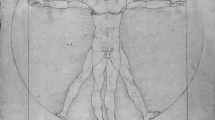Abstract
India has had a long tradition of more than 3000 years of pursuit of Mathematical ideas, starting from the Vedic age. The Sulvasutras (which included Pythagoras theorem before Pythagoras), the Jain works, the base 10 representation (along with the use of 0), names given to powers of 10 up to 1053, the works of medieval mathematicians motivated by astronomical studies, and finally the contributions of the Kerala school that came strikingly close to modern mathematics, represent the various levels of intellectual attainment.
Similar content being viewed by others
Suggested Reading
B Datta and A N Singh, History of Hindu Mathematics: A source book, Parts 1 and 2 (single volume), Asia Publishing House, Bombay, 1962.
Saraswati Amma, Geometry in Ancient and Medieval India, Motilal Banarasidas, Delhi, 1979.
Kim Plofker, Mathematics in India, PrincetonUniversity Press, Princeton, NJ, 2009.
K V Sarma (Ed.), Ganita-yukti-bhasha (Rationales in mathematical astronomy) of Jyesthadeva. Vol.I.Mathematics. Vol. I. Astronomy, with explanatory notes by K. Ramasubramanian, M D Srinivas and M S Sriram, Sources and Studies in the History of Mathematics and Physical Sciences, Springer, New York and Hindustan Book Agency, New Delhi, 2008.
K Ramasubramanian and M S Sriram (Ed.), Tantrasangraha of Nilakantha Somayaji. With a foreword by B V Subbarayappa, Culture and History of Mathematics, Vol.6, Hindustan Book Agency, New Delhi, 2011.
S G Dani, Geometry in Sulvasutras, in: Studies in the history of Indian mathematics, pp.9–37, Cult. Hist. Math. 5, Hindustan Book Agency, New Delhi, 2010.
George G Joseph, Crest of the Peacock, Non-European roots of mathematics, Third edition, Princeton University Press, Princeton, NJ, 2011.
K Ramasubramanian and M D Srinivas, Development of Calculus in India, in: Studies in the history of Indian mathematics, pp.201–286, Cult. Hist. Math. 5, Hindustan Book Agency, New Delhi, 2010.
Author information
Authors and Affiliations
Corresponding author
Additional information
S G Dani is a Distinguished Professor at the Tata Institute of Fundamental Research, Mumbai. He obtained his bachelor’s, master’s and PhD degrees from the University of Mumbai. His areas of interest are dynamics and ergodic theory of flows on homogeneous spaces, probability measures on Lie groups and history of mathematics. He has received several awards including the Ramanujan Medal and the TWAS Prize.
This is a slightly modified version of an article by the author published in Ramanujan@125, a special pullout brought out by The Hindu on 26 December 2011.
Rights and permissions
About this article
Cite this article
Dani, S.G. Ancient Indian mathematics — A conspectus. Reson 17, 236–246 (2012). https://doi.org/10.1007/s12045-012-0022-y
Published:
Issue Date:
DOI: https://doi.org/10.1007/s12045-012-0022-y



